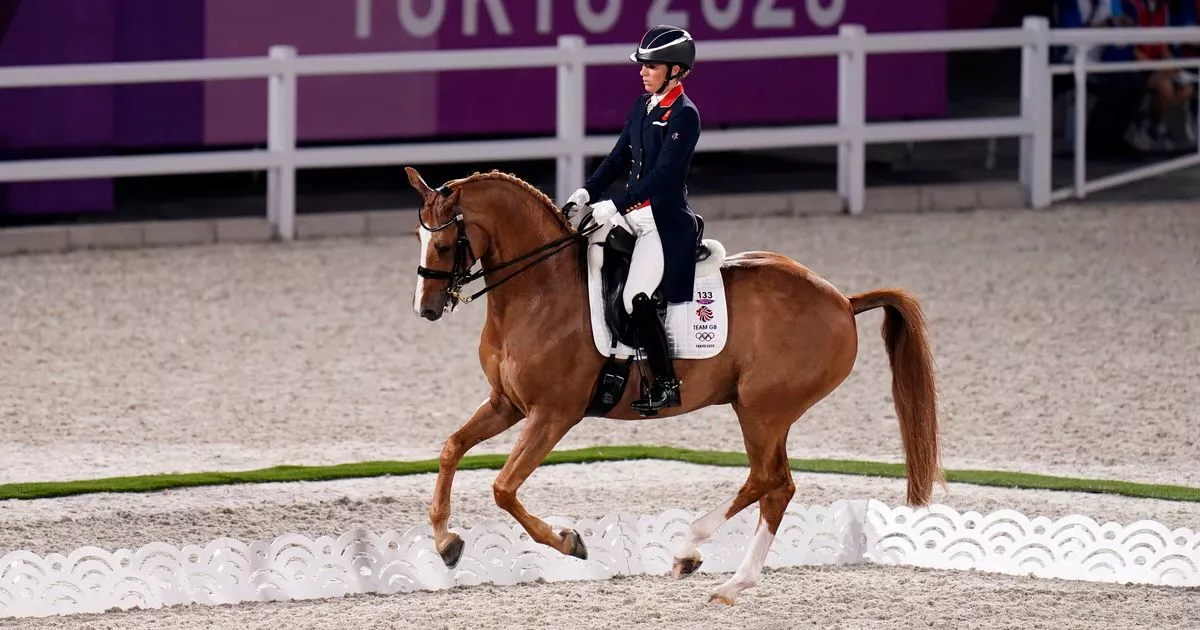
Equestrian dressage is a discipline within the sport of horse riding that combines grace, precision, and athleticism. It is a fascinating and elegant display of the partnership between horse and rider, showcasing their ability to perform intricate movements with finesse.
In this article, we will explore 19 fascinating facts about equestrian dressage that will not only pique your interest but also give you a deeper understanding of this incredible sport. From the history and origins of dressage to the intricate movements and scoring system, we will delve into the world of dressage and uncover the nuances that make it such a captivating event to watch.
So, whether you are a seasoned fan of equestrian sports or someone who is curious to learn more, sit back, relax, and let’s embark on a journey into the intriguing world of equestrian dressage.
Key Takeaways:
- Equestrian dressage is like a ballet on horseback, showcasing the perfect harmony between horse and rider through precise movements and artistry.
- Dressage has ancient roots in Greece and continues to be a highly regarded Olympic sport, emphasizing the elegance and beauty of the partnership between horse and rider.
Originating from Ancient Greece
Equestrian dressage, often referred to simply as dressage, has its roots in ancient Greece, where it was used as a method to train horses for war.
Highly Regarded Olympic Sport
Equestrian dressage has been an Olympic sport since 1912 and is widely acknowledged as the “Ballet on Horseback.”
Perfect Harmony Between Horse and Rider
The primary goal of dressage is to achieve a harmonious partnership between horse and rider, where the horse smoothly responds to the rider’s subtle cues.
Precision and Artistry
Dressage is often described as an art form as it combines technical precision with the grace and beauty of horse movements.
The Piaffe and Passage
The piaffe and passage are two advanced dressage movements where the horse demonstrates highly collected and elevated trotting.
Dressage Levels
Dressage is divided into different levels, starting from introductory levels for beginners and progressing to the highest level, known as Grand Prix.
Judges’ Scoring System
Dressage performances are evaluated by a panel of judges who assess the horse’s obedience, suppleness, impulsion, and overall harmony with the rider.
Quadrille and Pas de Deux
Quadrille and Pas de Deux are dressage performances involving a group of four horses or two horses, respectively, performing synchronized movements.
Dressage Movements
There are numerous dressage movements, including half-pass, flying changes, extended trot, canter pirouettes, and the collected walk.
The Spanish Riding School
The Spanish Riding School in Vienna, Austria, is renowned for its classical dressage training and the artistry of its Lipizzaner stallions.
Dressage Training Scale
The dressage training scale consists of six elements: rhythm, relaxation, contact, impulsion, straightness, and collection.
Age and Breed Restrictions
Dressage competitions have age restrictions for horses, usually starting from the age of four, and some competitions also have breed-specific divisions.
Dressage Arena
The dressage arena is a rectangular space with specific letters marking the positions where various movements and figures are performed.
International Dressage Competitions
There are several prestigious international dressage competitions, including the World Equestrian Games and the FEI Dressage World Cup.
Dressage as Therapeutic Riding
Dressage has therapeutic benefits and is used in equine-assisted therapy to help individuals improve their balance, coordination, and muscle tone.
Dressage and Classical Horsemanship
Dressage is deeply rooted in classical horsemanship principles, emphasizing the importance of lightness, subtlety, and mutual trust between horse and rider.
Dressage Horse Breeds
While any horse breed can participate in dressage, some of the most common breeds seen in the sport include Warmbloods, Lusitanos, and Dutch Friesians.
Dressage Symbols and Figures
The dressage arena is marked with letters representing specific points, helping riders navigate their movements and figures with precision.
Elegance and Beauty
Watching a well-executed dressage performance is a true spectacle of elegance and beauty, showcasing the unique bond between horse and rider.
These 19 facts about equestrian dressage highlight the richness and complexity of this captivating sport. From its ancient origins in Greece to its global recognition as an Olympic discipline, dressage continues to captivate enthusiasts and showcase the incredible partnership between horse and rider. Whether it’s the precision of movements, the artistry of the performance, or the adherence to classical horsemanship principles, dressage remains a timeless art form that brings together the grace and power of these magnificent animals.
Conclusion
In conclusion, equestrian dressage is a fascinating and challenging sport that requires a unique combination of skill, precision, and harmony between horse and rider. With its rich history, strict rules, and intense training, dressage has become a beloved discipline among riders and spectators alike. Through the intricate movements, graceful choreography, and unwavering dedication of its practitioners, dressage truly exemplifies the beauty and artistry of horse riding. Whether you are a novice enthusiast or a seasoned competitor, exploring the world of equestrian dressage is a journey that will captivate and inspire you.
FAQs
1. What is equestrian dressage?
Equestrian dressage is a discipline within the sport of horse riding that focuses on the development and training of the horse’s natural athletic ability and willingness to perform precise movements.
2. What are the different levels of dressage?
There are various levels of dressage, ranging from introductory levels for beginners to advanced levels for experienced riders. The levels include Training Level, First Level, Second Level, Third Level, Fourth Level, Prix St. Georges, Intermediaire I, Intermediaire II, and Grand Prix.
3. What are the basic movements in dressage?
The basic movements in dressage include the walk, trot, canter, halt, rein-back, leg yield, shoulder-in, half-pass, pirouette, piaffe, and passage.
4. How are dressage competitions judged?
Dressage competitions are judged based on the horse’s responsiveness to the rider’s aids, the quality of the horse’s movements, the accuracy and precision of the performed movements, and the harmony between the horse and rider.
5. Can any horse participate in dressage?
While any horse can participate in dressage, certain breeds such as Warmbloods and Lusitanos are more commonly seen in the higher levels of competition due to their natural athleticism and ability to perform the required movements with ease.
6. How can I start learning dressage?
If you’re interested in learning dressage, it is best to start by finding a reputable instructor or trainer who can guide you through the basics of the discipline. They will be able to provide you with proper instruction, training exercises, and help you develop the necessary skills to progress in dressage.
Equestrian dressage showcases elegance, precision, and harmony between horse and rider. If you're curious to learn more about the fascinating world of equestrianism, explore our article on 19 facts about equestrian sports. For those interested in getting started with this thrilling activity, check out our piece on horse riding facts that will help you understand the basics. Dressage enthusiasts won't want to miss our article on Dressage at Devon, one of the most prestigious dressage competitions in the United States, offering insights into the event's history and highlights.
Was this page helpful?
Our commitment to delivering trustworthy and engaging content is at the heart of what we do. Each fact on our site is contributed by real users like you, bringing a wealth of diverse insights and information. To ensure the highest standards of accuracy and reliability, our dedicated editors meticulously review each submission. This process guarantees that the facts we share are not only fascinating but also credible. Trust in our commitment to quality and authenticity as you explore and learn with us.


